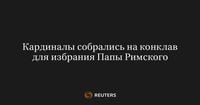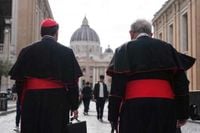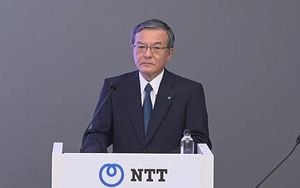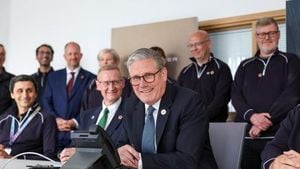In a historic moment for the Roman Catholic Church, more than 130 cardinals from around the globe gathered in the Vatican on May 7, 2025, to begin the process of electing a new Pope. This conclave, which follows the death of Pope Francis in February, marks a significant event in the Church's 2,000-year history as it will see the election of the 267th Pontiff.
Following a morning mass held at St. Peter's Cathedral, the cardinals will proceed to the Sistine Chapel in the afternoon to cast their votes for the preferred candidate. This procedure is steeped in tradition, with the cardinals entering the chapel and cutting all ties with the outside world until a new Pope is chosen. The anticipation builds as everyone waits for the smoke signals from the chapel's chimney, which will indicate the outcome of the voting. Black smoke will signal that no decision has been reached, while white smoke will announce the election of a new leader of the Catholic Church.
The conclave's proceedings will begin with a hymn, 'Veni, Creator Spiritus', played as the cardinals move to the Sistine Chapel. Once gathered, the papal master of ceremonies, Diego Ravelli, will announce "Extra Omnes," meaning "everyone out," allowing only the voting cardinals to remain. This year, 113 cardinals under the age of 80 will participate in the secretive election process, which is expected to unfold over several days.
Cardinal Robert McElroy, the Archbishop of Washington, expressed the mystery surrounding the election, stating, "I have no predictions. The election process is deep and mysterious. I cannot give you any information about who is leading." This uncertainty reflects the diverse opinions among the cardinals, some of whom aim to continue Pope Francis' mission of creating a more transparent and open Church, while others seek a return to more traditional values.
The late Pope Francis, who passed away on February 21, 2025, at the age of 88, had a significant impact on the Church during his tenure. His funeral was held on April 26, 2025, and he was interred in St. Peter's Basilica. Francis was known for his efforts to appoint cardinals from countries that had never had representation before, such as Haiti and South Sudan, which has contributed to the geographical diversity of the current conclave.
With cardinals from 70 different countries participating, this conclave is noted for its unprecedented global representation. Japanese Cardinal Tarzisio Isao Kikuchi mentioned that the Asian cardinals are likely to vote as a bloc, differing from their European counterparts, who tend to vote based on national interests or personal preferences. "We Asians are probably more united in supporting one or two candidates. Let's see who will be ahead," Kikuchi remarked.
As the cardinals prepare for the election, speculation about potential candidates is rife. La Stampa reported that one of the leading contenders is 70-year-old Pietro Parolin, the current Secretary of State of the Vatican. However, the absence of a clear frontrunner adds to the intrigue of the conclave.
During the voting process, the cardinals will cast ballots that will be burned, resulting in the smoke signals that indicate the election's progress. If black smoke emerges, it means that the election has not yet concluded, prompting additional rounds of voting. If white smoke appears, the bells of St. Peter's Basilica will ring, announcing the election of a new Pope.
One of the most engaging aspects of a papal election is the name chosen by the new Pontiff. Traditionally, the name signifies the direction the new leader intends to take the Church. Names like John, Paul, and Benedict have historical significance and could be chosen to reflect continuity or change. The name John, for instance, is associated with Pope John XXIII, known for his reforms and the Second Vatican Council. Some cardinals suggest that the Church might benefit from a new Paul, referencing Pope Paul VI, who was known for his unifying leadership.
As the conclave unfolds, the world watches closely to see who will emerge as the next leader of the Catholic Church and what direction they will steer the Church in the years to come. The anticipation surrounding the election is palpable, as the cardinals' decision will shape the future of 1.4 billion Catholics worldwide.
With the conclave set to commence, the Vatican is steeped in a sense of solemnity and expectation. The cardinals will remain in isolation, focusing solely on their sacred duty to elect a new Pope. As they gather in the Sistine Chapel, the weight of history and tradition rests upon their shoulders, and the world awaits the outcome of this pivotal moment in the Catholic Church.





